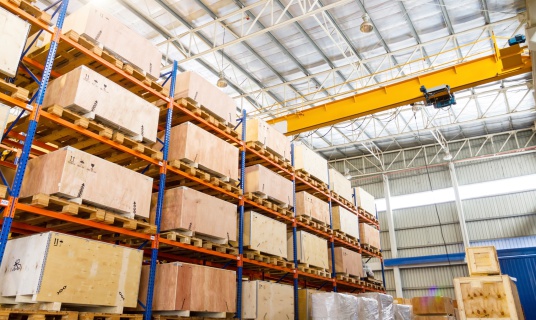Safe pallet storage is a new and heated issue between local fire marshals and pallet manufacturers because of the new code created in response to the high risk of fires in pallet storage yards. While the National Wood Packaging and Container Association (NWPCA) is in agreement with The International Code Council (ICC) that safety measures must be in place, the application of a strict new code without any scientific research or input from knowledgeable members of the pallet industry was at the stem of the debate.
Who is the ICC? The ICC defines themselves as being responsible for “developing model codes and standards used in the design, build and compliance process to construct safe, sustainable, affordable and resilient structures”. Fire marshals are required to follow the codes outlined by the ICC in their local municipalities. The ICC recently re-examined the codes that apply to pallet storage in The United States. The ICC defines official high piled combustible storage as: “including certain high-hazard commodities, such as rubber tires, Group A plastics, flammable liquids, idle pallets and similar commodities, where the top of storage is greater than 6 feet (1829 mm) in height”. Changes to the International Fire Code would alter the outdoor storage of idle pallets, limiting the amount of pallets that can be stored on a yard and the square footage in which they could be stored in. The proposed code changes, which were tabled after a discussion between the ICC and the NWPCA in Atlantic City in 2013, were originally going to be implemented in 2014.
What exactly would the new code effect? If applied, the new rules would outline the amount of water that must be available at fire hydrants adjacent to the storage area, the location of sprinklers in the storage yard and the availability of proper access for fire vehicles to the area. The code would also change the storage of idle pallets in outdoor storage yards. Idle pallets would have to be stored in a grid pattern that would allow fireman to easily access the area as well as implementing natural fire breaks in the storage pattern. Due to these code changes, pallet companies would be forced to either decrease their inventory or increase the size of their storage yard to comply with the code. Most pertinent to pallet manufacturers is Section 2810.5 of the code which outlines “the storage arrangement of piles and stacks addressing height, maximum pile size and distances from exposures. A “stack” is an individual stack of pallets, a “pile” is a group of two or more stacks of pallets grouped together”. These changes would seriously affect how each individual pallet manufacturing company functions, affecting every aspect of the business from production to distribution.
In response to the code changes, the NWPCA stated that the association was initially reacting to the fact that they had “not been included in the initial drafting of the policies even though [their] members stood the most to lose by the code changes”. Fortunately, International Code Council (ICC) members voted this fall not to adopt proposed rules for exterior pallet storage for the time being. The NWPCA commented that “this is not the end, but the beginning of an ongoing effort by NWPCA with the ICC to develop safety practices that our industry can support and implement”. For now, the discussion has been tabled until next code cycle in 2015.
If you want to learn more about the new legislation visit the ICC website and view section 2810 (New) “Wood and Plastic Pallet Storage and Rehabilitation”.
